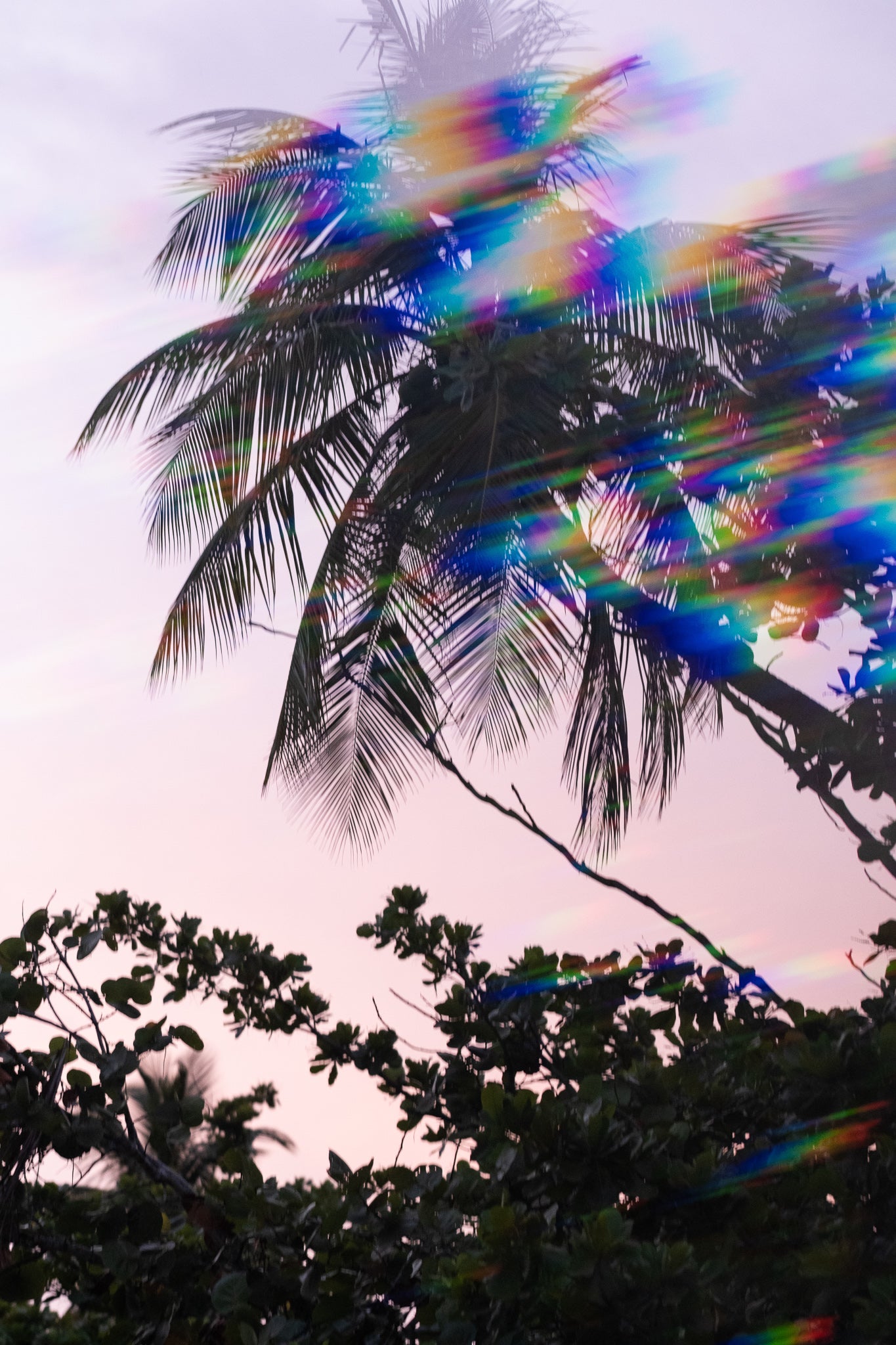There are few things in design that are more subjective—or more important—than the use of color. Color theory is a science and art unto itself, which some build entire careers on, as color consultants or sometimes brand consultants. Knowing the effects color has on a majority of people is an incredibly valuable expertise that designers can master and offer to their audiences.
There’s a lot to it, though. Something as simple as changing the exact hue or saturation of a color can evoke a completely different feeling. Here is a brief overview on color theory principles and why we chose the hues we did for this summer's collection.

Warm Colors

Warm colors include red, orange, and yellow, and variations of those three colors. These are the colors of fire, of fall leaves, and of sunsets and sunrises, and are generally energizing, passionate, and positive. Given our current climate and the tension most of us feel, we've opted for two hues that fall within the fully warm spectrum. Variations of orange, to be more precise. Our GUAVA falls into a light red-orange, and our MANGO falls into the yellow-orange category.
Red and yellow are both primary colors, with orange falling in the middle (making it a secondary color), which means warm colors are all truly warm and aren’t created by combining a warm color with a cool color. A general rule of thumb is to use warm colors to reflect passion, happiness, enthusiasm, and energy.
ORANGE (SECONDARY COLOR)

Orange is a very vibrant and energetic color. In its muted forms it can be associated with the earth and with autumn. Because of its association with the changing seasons, orange can represent change and movement in general. Orange is also strongly associated with creativity.
Because orange is associated with the fruit of the same name, it can be associated with health and vitality. In designs, orange commands attention without being as overpowering as red. It’s often considered more friendly and inviting, and less in-your-face.
ABOVE: THE PENELOPE ONE PIECE GUAVA
YELLOW (PRIMARY COLOR)

Yellow is often considered the brightest and most energizing of the warm colors. It’s associated with happiness and sunshine.
Yellow is also associated with hope, as can be seen in some countries when yellow ribbons are displayed by families who have loved ones at war. In design, bright yellow can lend a sense of happiness and cheerfulness.
Cool Colors

Cool colors include green, blue, and purple. They are often more subdued than warm colors. They are the colors of night, of water, of nature, and are usually calming, relaxing, and somewhat reserved.
Blue is the only primary color within the cool spectrum, which means the other colors are created by combining blue with a warm color (yellow for green and red for purple).
Because of this, green takes on some of the attributes of yellow, and purple takes on some of the attributes of red.
GREEN (SECONDARY COLOR)

Green is a very down-to-earth color. It can represent new beginnings and growth. It also signifies renewal and abundance.
Green has many of the same calming attributes that blue has, but it also incorporates some of the energy of yellow. In design, green can have a balancing and harmonizing effect, and is very stable.
It’s appropriate for designs related to wealth, stability, renewal, and nature. Brighter greens are more energizing and vibrant, while olive greens are more representative of the natural world. Dark greens are the most stable and representative of affluence.
BLUE (PRIMARY COLOR)

Blue is used extensively to represent calmness and responsibility. Light blues can be refreshing and friendly. Dark blues are more strong and reliable. Blue is also associated with peace and has spiritual and religious connotations in many cultures and traditions (for example, the Virgin Mary is generally depicted wearing blue robes).
The meaning of blue is widely affected depending on the exact shade and hue. Light blues are often relaxed and calming. Bright blues can be energizing and refreshing. The two hues of blue we've picked are CARIBBEAN BLUE and PACIFICO. Caribbean blue is a warm blue, leaning towards a light teal. This hue offers a soothing and balancing effect- evoking a sense of both coolness from the summer heat, yet harmony and comfort within it's warmth. Pacifico is a cooler blue, offering a vibrant and refreshing feel.
ABOVE: THE ROPE KINI CARIBBEAN BLUE
ABOVE: THE TRIANGLE TOP & WENDY BOTTOM PACIFICO
FINDING YOUR BEST MATCH
We've found within these four shades we've been able to offer something for each skin, hair, and eye combination out there.
Cooler skin tones would suit Pacifico and sometimes Guava, depending on your undertone.
Neutral skin tones suit all four.
Warmer skin tones suit Guava, Mango, and Caribbean Blue.
When choosing your color think about how your hair and skin look when you've been in the sun. Does your hair get blonder and white (cooler), or does it get brassier (more caramel/red)?
If you "brown out" under the sun you'd probably like the contrast of MANGO or Caribbean Blue against your skin. If you like a subtle, more fluid look- then Guava is the color for you.
If you "turn red" under the sun Pacifico and Guava would probably be your best bet, once again- the latter offering a slightly more subtle and fluid look to enhance pink/peachy undertones.
OUR COLORS




We hope you've learned something with this article. For specific questions or concerns about which color you should pick please feel free to email us at hey@swellobsessed.com
Want to learn more?
There's so much literature on color and how to wear it, but this book is one of my all-time favorites:








4 comments
BtcUQvdJsr
mrscYWiLQwfPtK
xSwOCfaZjTmAb
CuYfmEAJ
Leave a comment